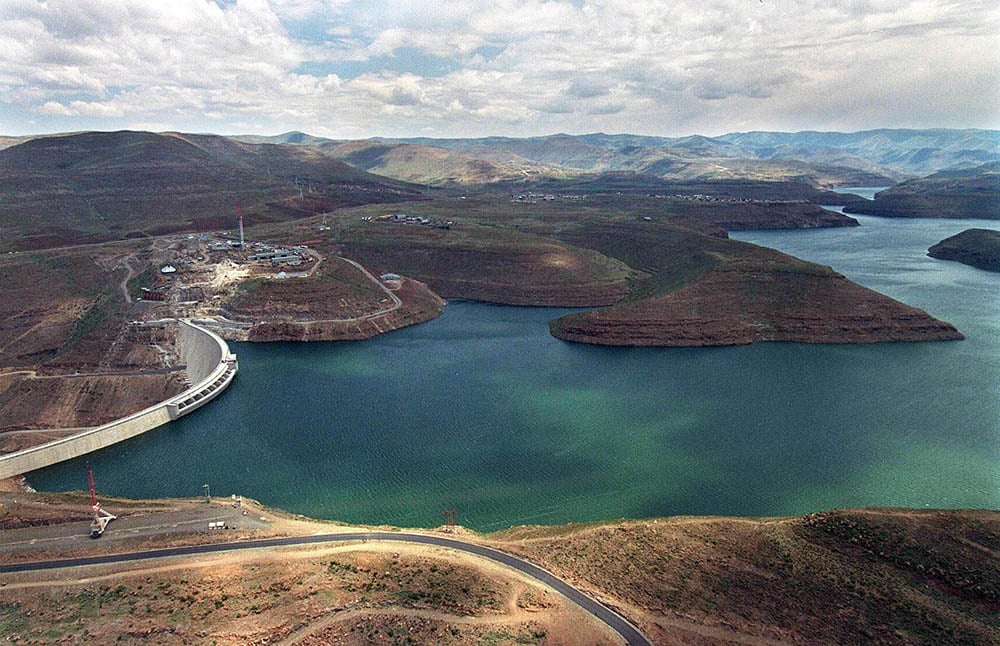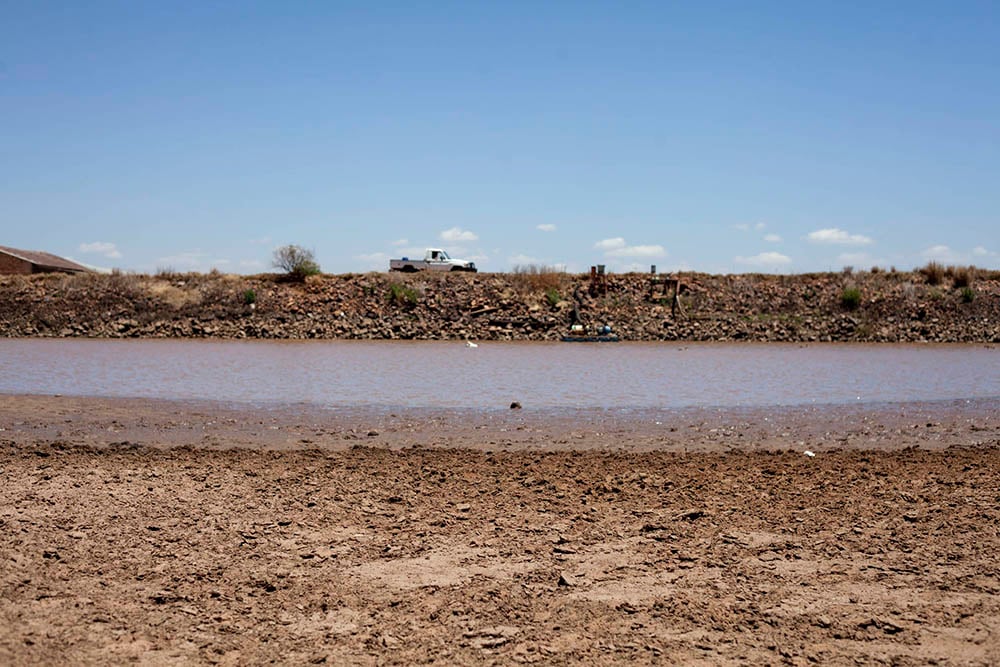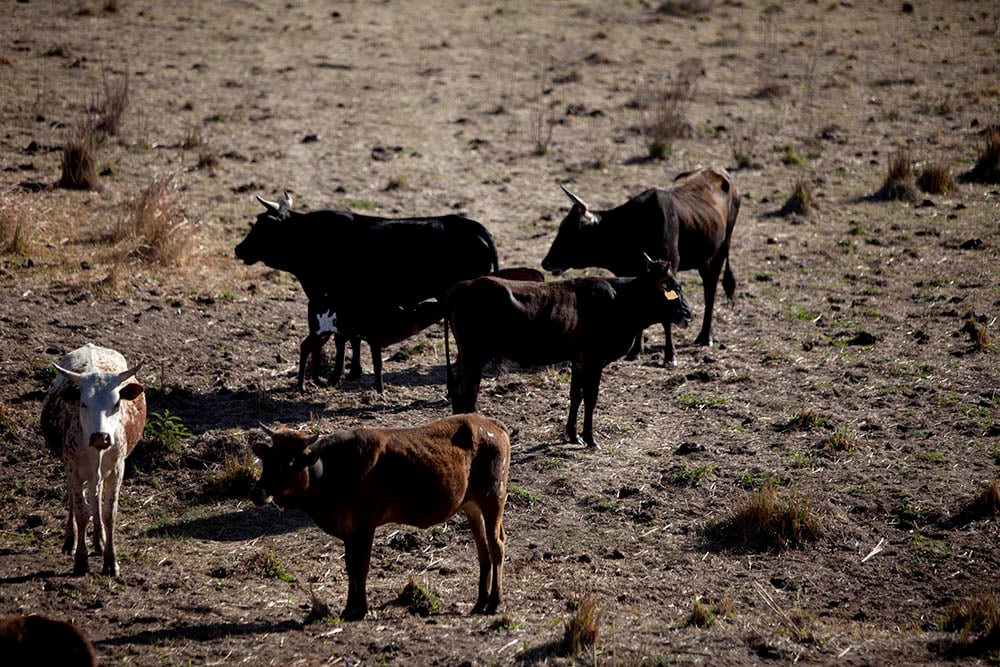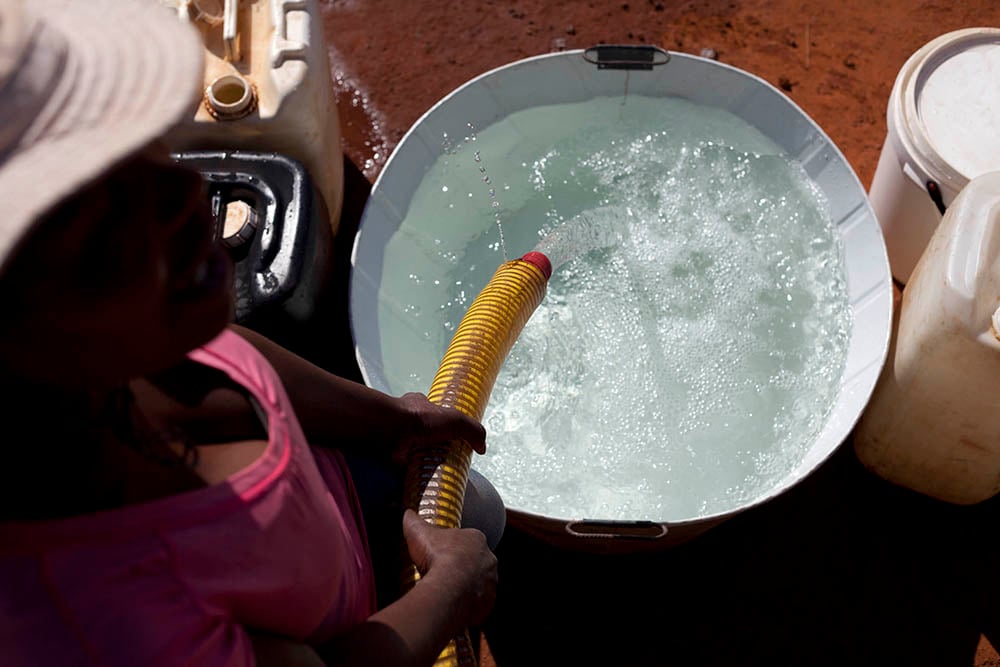Dams that previously supplied water to agricultural areas affected by drought are now running dry
NEWS ANALYSIS
This will be a long year for South Africa and its neighbours. Less rain fell last year than at any time in the past 112 years for which there are records.
In a country where crops already struggle to survive, this means 1.3-million hectares of land that should be carrying maize are lying fallow. The other 1.3-million hectares that are planted are all that stand against widespread hunger. Little is expected to improve, with 2016 slated to beat 2015 as the hottest year ever recorded.
Food security has always been precarious in South Africa. The country has half the world’s average rainfall in a good year – just under 500mm compared with nearly 1 000mm – and some of that rain falls on land that is marginal and should not be carrying crops.
To get around this, successive governments have built big dams in and near Lesotho. These store water in good times so that there is a buffer during the bad times. That water is piped around South Africa, allowing crops to grow in places such as the Free State, where they would struggle without irrigation.

Lesotho’s Katse Dam provides much-needed water for drought-stricken parts of Gauteng and the Free State. (Walter Dhladhla, AFP)
With a smaller population, these dams gave South Africa about three years’ security of supply, according to records kept by the water and sanitation department. With most droughts lasting two years, this meant the security of supply was assured. Farming proliferated and the country became a net exporter of food, with the agriculture department reporting about 10-million tonnes of maize is grown each year.
But the population has grown by about 15-million people in the past two decades and the infrastructure hasn’t kept up. To date, this has not been a problem. Regional droughts have been handled without a national emergency being declared – in November last year North West, like other provinces, was declared a drought disaster area. Water tankers have moved water from areas with water to those without.
But the worst El Niño on record has changed this. Starting last year, this phenomenon has seen dry weather become the norm across the southern hemisphere. For most countries, this is now the second planting season in which yields have collapsed.
In South Africa, the problem is increasingly acute because the big dams are running dry.

South Africa has experienced low rainfall this year and more farmers are feeling the pressure, with dams running out and maize fields on the verge of dying. (Oupa Nkosi, M&G)
For Gauteng, the problem has been kept at bay by water from Lesotho. But the water shortfall is a problem in provinces such as Limpopo, where there are fewer transfer schemes. This area relies on seven big dams for its water and their levels have dropped from an average of 70% a year ago to less than 40% this week.
Half of these were supposed to be upgraded to hold more water, but those plans are running years behind schedule, a pattern repeated throughout the country. As a consequence of this, coupled with the delay in building dams – Limpopo’s De Hoop Dam was five years late in finishing – the existing dams no longer provide a three-year buffer.
Lepelle Northern Water, which supplies most of Limpopo, says R9-billion is needed in the next five years to ensure future droughts can be better managed. In places such as Giyani municipality, which has seen its own water scheme and dam delayed by several years and double in cost, this means people’s only sources of water are tankers or polluted rivers.

The drought has hit farmers badly in a number of provinces, with crops failing and cattle going hungry and dying because there is insufficient grazing. (Oupa Nkosi, M&G)
When the Mail & Guardian visited the area early last year, people were taking water from an old irrigation channel. Fast forward a year and Maria Hlungwani, one of the women the M&G originally spoke to, says the situation is now desperate. “We were paying R3 a container [to private sellers] for drinking water. Now we pay double or more.”
That water supply is intermittent and people often push each other out of the queue when a seller comes along, she says. “You can’t fight for water. It’s not how communities should work. But when you are desperate to give water to your children, what choice do you have?”
Giyani is not unique. Dozens of towns and countless villages in South Africa have reported running out of water during the summer. Residents of Aliwal North in the Eastern Cape spent Christmas begging for water from passing motorists before water was especially released from Lesotho for the town and surrounding areas. Emergency transfers and tankers have sapped supplies elsewhere – and the fiscus.

Residents of Refilwe Manor in Cullinan, Gauteng, rely on water provided by a tanker from the municipality. (Oupa Nkosi, M&G)
These problems are short-term and have been alleviated to some extent by the recent rain. The longer-term problem is food shortages. Last year, the El Niño arrived late so it destroyed only a third of South Africa’s maize crop. That shock was absorbed, with retailers controlling the price of basic foodstuffs. A stronger rand also meant food could be imported at a reasonable cost.
But the growing influence of El Niño meant 2015 became the hottest year ever recorded around the globe. According to Grain SA, it also meant only half the country’s 2.6-million hectares of maize have been planted.
The same story is echoed throughout the southern hemisphere. The only major sellers of white maize left with a surplus are Mexico and the United States. Consequently, the price of maize has continually risen – this week it was R5 200 a tonne.
With the rand weakened by decisions such as the surprise axing of finance minister Nhlanhla Nene, the cost of importing the expected shortfall of six million tonnes will exceed R20-billion. There is no other choice. Grain SA estimates the current crop and reserves will last until September. After that, food will have to be imported until a new harvest refills those silos in early 2017 – if the rain falls and the heat abates.
SA’s drought has domino effect in the region
South Africa, the region’s biggest food producer, exports its surplus and the country’s neighbours are dependent on it for 40% of their food.
A collapse in their yields, and in South Africa’s, means some countries are declaring national disasters.
Angola is handing out food parcels to about 750 000 people and a third of Lesotho’s population is facing starvation.
The drought has halved Zimbabwe’s maize output, with its Grain Marketing Board saying it will have to spend R1.4-billion on importing food.
The Kariba Dam, which supplies Zimbabwe and Zambia with water and electricity, has seen its levels drop from 53% a year ago to 12%, and Zambia has asked South Africa for 300MW of emergency power. Eskom can still provide that in a drought only because its stations are guaranteed a supply of water.
The United Nations World Food Programme said this week 14-million people in the region face hunger. “With little or no rain falling in many areas and the window for planting cereals closing fast, or already closed in some countries, the outlook is alarming.”
These countries will have to take money from other parts of the economy to pay for food until at least March 2017.